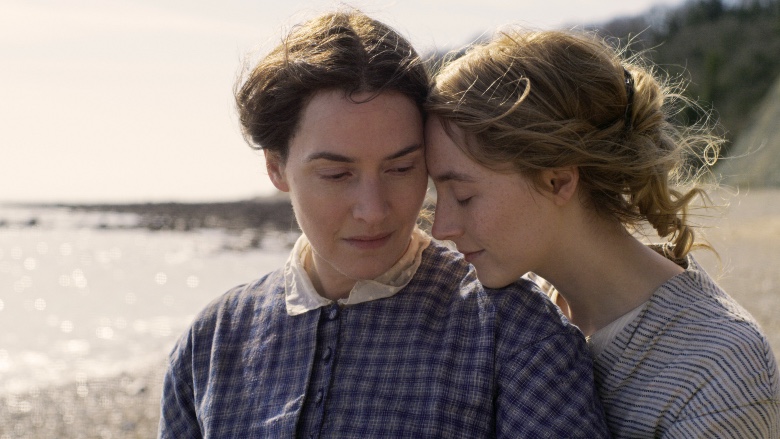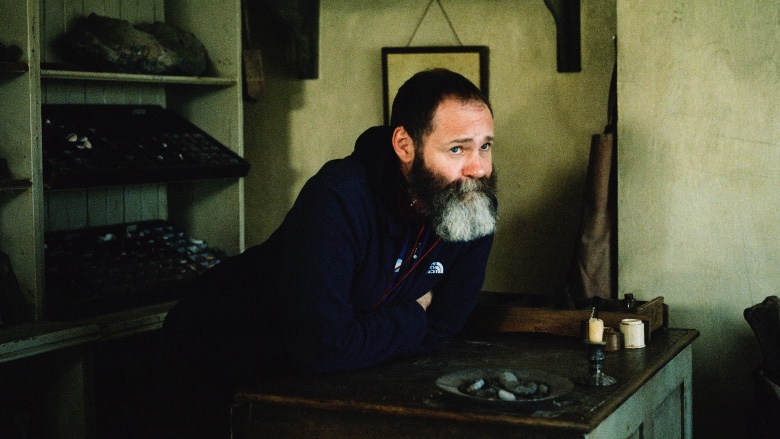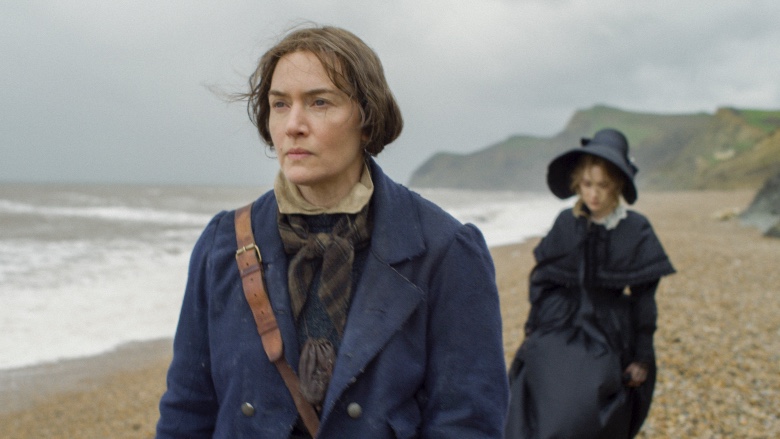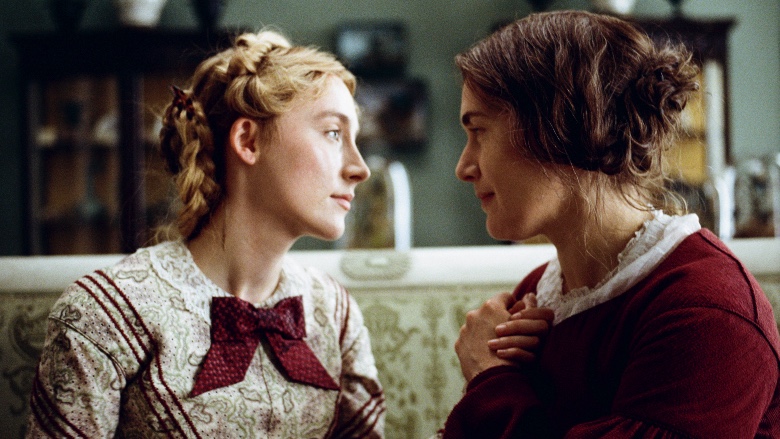
Underappreciated during her lifetime, Mary Anning made important contributions to paleontology in the late Nineteenth Century. In Ammonite, writer and director Francis Lee imagines her later career, when she struggled with poverty and isolation. The Neon release opened in theaters November 13.
In Lee’s script, Anning searches for fossils while scouring the rocky beaches near Lyme Regis. As played by Kate Winslet, she is a perfectionist finding her way in a still-evolving field. She forms a relationship with Charlotte Murchison (Saoirse Ronan), a neglected wife grieving over a recent miscarriage. Their affair forces Anning to re-evaluate her position in Lyme Regis.
Lee’s previous feature, God’s Own Country, was marked by extensive research and attention to detail. He took a similar approach to Ammonite, prepping with the cast and heads of department four to five months before shooting started.
“That’s the only way I know how to do it,” he said by telephone. “In order to create an authentic world, you have to really investigate who these people are. I do a fair bit of research into the minutiae of people’s lives, and then work with the actors to investigate their characters from the moment they’re born until we meet them in the film.”
Winslet spent weeks on the beaches of Dorset working with a chisel and hammer, learning not just how to become a fossiler, but what it was like to experience the cold, wet conditions Anning faced.

“All of those feelings will impact on how her character will be played, both physically and emotionally,” Lee said. “Similarly with heads of departments, we start four or five months before the shoot, building the details of this world.”
Saying that he was not a fan of “set dressing,” Lee insisted that every object within the movie’s locations had to be charted into the space.
“For example, with a cup I would say to the Production Designer [Sarah Finlay], where is this cup from? Where was it made? Who bought it? Why did they buy it? Where did they buy it? Where did they keep it? So everything feels like it belongs and has a purpose. And if it doesn’t, then it doesn’t stay on the set.”
Costumes received the same attention. Clothes at the time were expensive, in part because they were all hand-made. Winslet’s character would have been able to afford only three or four dresses, and they would have been out-of-fashion because she could not buy new ones.
Shooting took place on location in Lyme Regis and its surroundings. Anning’s home had been torn down, replaced by a museum, but Lee and his crew were able to find period equivalents for her house and shop. Rooms for the lower classes of the time tended to be small, dark and uncomfortable. They were difficult to film in, especially since Lee wanted to use natural light as much as possible.
The director described Director of Photography Stéphane Fontaine (A Prophet) as an invaluable collaborator. They decided on a fluid camera that remained close to the characters. Rather than storyboard interior scenes, the two tried to figure out how the spaces were originally used.
“Stéphane and the actors were very much involved with how we filmed in those rooms,” Lee explained. “I’d go, ‘Okay, where is the best natural light in the room? That’s where they would put the chair for reading. Where’s the warmest part of the room? Where’s the damp part? Where’s the dark part?’

“When it came to blocking, we all understood the rooms and spaces to the same extent. That made blocking very easy. Shooting in small spaces is challenging, but it’s very possible.”
One striking aspect of Ammonite is how little dialogue the characters share. Long stretches of the movie are silent. When he was writing the script, Lee decided that Anning had internalized her emotions after a relationship failed. She had essentially closed down.
“I also felt these characters weren’t particularly emotionally articulate,” he added. “So I had to find ways to tell the story through pictures, through silences, rather than through dialogue. I loved that challenge. If you’re working with really fantastic actors who can deliver the story without saying the words, it’s an absolute joy.”
Lee believes that many filmmakers are tempted to explain too much. “We’re all streaming Netflix or whatever. In a lot of television, it’s all about characters saying, ‘I feel like this because this happened.’ But as someone who loves cinema and visual storytelling, I love to watch films where I am required to think, to make connections.
“I don’t know about you, but in my life I’m quite a private person. There are very few people who really know me, whom I would open up to. Often in real life we communicate nonverbally, actually we’re quite good at it. I guess I like telling stories that way.”
Lee grew up on a farm, and today lives in Yorkshire “on the hills in the middle of nowhere.” Both God’s Own Country and Ammonite deal with isolation, physical and emotional. “I explore the theme of loneliness,” he said. “Some of the things from my experience growing up in a very isolated place probably plays out in these movies.”
The director is also fascinated by work. In Ammonite we learn how to split rocks, to make ink, to carry coal for heating, to fix shells to a picture frame.
“The ways in which people work have a massive impact on them, physically and emotionally,” Lee said. “And I’m very interested in stories about the working class, people we don’t often see depicted on screen.”

Anning and Charlotte share graphic intimacies in Ammonite. Filming them required negotiating what the performers would feel comfortable portraying.
“We had an open discussion about what the scenes were about, where they felt their characters were at those points,” Lee said. “We plotted it out in the most rudimentary way with Stéphane, who was perfect for this film because he had relationships with the actors and could be very close to them with the camera.
“Then you lock off the room, kill all the monitors, police everybody away. And you shoot quickly, maybe once or twice, but that’s it. You talk about it a lot beforehand, you do a lot of listening to what the actors are saying, and you do everything you can to make it feel as safe and comfortable and respectful as possible.”
Lee knew that his script was “long,” but the cast and crew were so well prepared that they could get each shot in one or two takes. Working with a big page count each day, they filmed every scene in the script in six weeks.
Not all of the script made it to the final cut. Working with Editor Chris Wyatt, Lee removed moments he felt repeated emotional points.
“There were some very tough choices,” he admitted. “But when the film was finished, I got a real sense of the loneliness and loss from each of the characters. The fact that in the end they can cope better with their lives may be due to the fact that their relationships were progressive, they allowed a portion of growth.”





